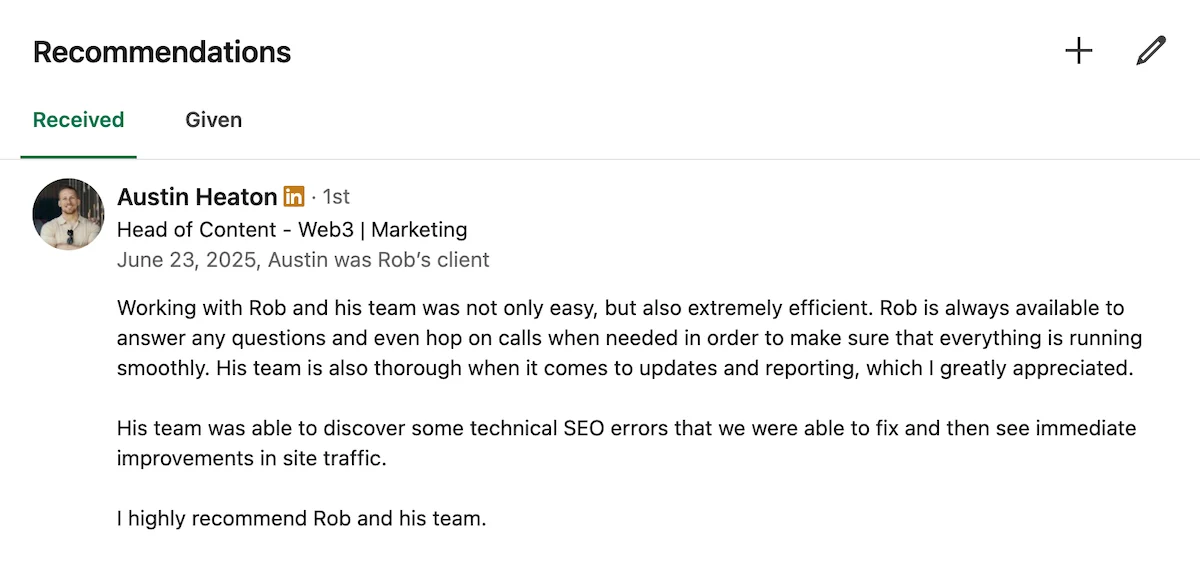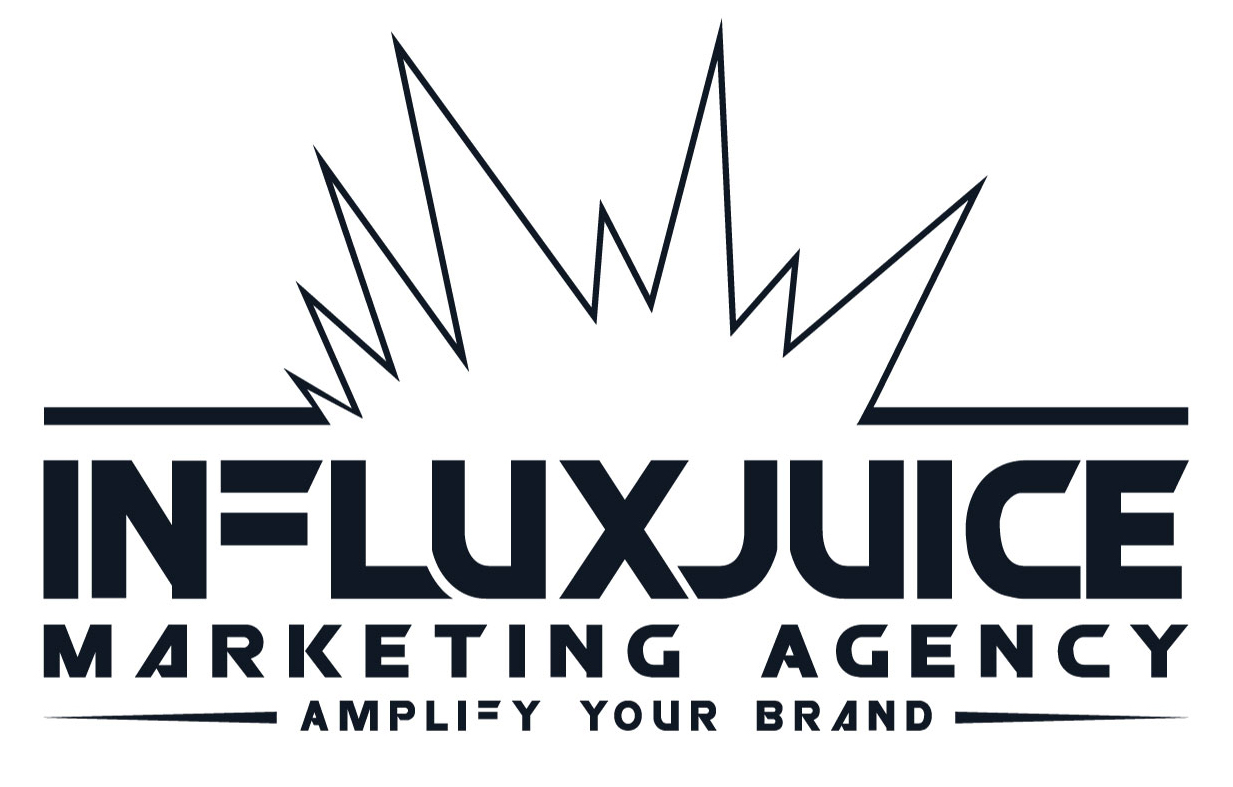Why do recommendations matter more than ever? Think about the last time you made a significant purchase – whether it was a new smartphone, a kitchen appliance, or even choosing a restaurant. What was your first step? If you’re like 93% of consumers, you probably looked at reviews first. In our digital age, peer validation has become the cornerstone of every buying decision. This same principle applies tenfold in professional services and B2B relationships.
LinkedIn recommendations serve as your professional “Yelp reviews” – but with even greater impact. Unlike anonymous online reviews, these are verifiable endorsements from real people in your network, attached to their professional profiles and reputations. They’re the modern equivalent of word-of-mouth referrals, but permanently visible to anyone researching your business.
The Psychology Behind Recommendations
Human beings are hardwired to seek social proof. Studies in behavioral economics consistently show that people are:
- More likely to trust peer recommendations over advertising (92% vs 33%)
- Willing to pay up to 22% more for services with excellent reviews
- Influenced most by testimonials that tell a specific story with measurable outcomes
This explains why platforms like Amazon prominently display customer reviews, why TripAdvisor built an entire business around travel reviews, and why Yelp can make or break restaurants. The same dynamic plays out in professional services through LinkedIn recommendations.
Real-World Examples of Recommendation Power

Case Study 1: The Freelancer Who Tripled Her Rates
Sarah, a freelance graphic designer, struggled to move beyond $50/hour projects until she strategically cultivated recommendations. After completing each project, she asked clients to highlight specific skills on her LinkedIn – like “transformed our boring investor deck into a visually stunning presentation that helped us secure funding.” Within six months, she landed corporate clients at $150/hour who cited her recommendations as key to their decision.
Case Study 2: The Agency That Cut Sales Cycles in Half
A digital marketing agency reduced their sales process from 3 months to 6 weeks simply by adding a “What Our Clients Say” section to their LinkedIn showcase page featuring video testimonials. Their sales team reported prospects referencing these recommendations in initial calls, saying things like, “When I saw what you did for Company X, I knew we needed to talk.”
Case Study 3: The Consultant Who Landed Speaking Gigs
Management consultant Jamal used LinkedIn recommendations as social proof when pitching to conference organizers. The endorsements from Fortune 500 clients gave event planners the confidence to book him for high-profile engagements, leading to six-figure consulting opportunities.
The Anatomy of a Perfect Recommendation
Not all recommendations are created equal. The most effective ones share these characteristics:
- Specificity: “Increased our conversion rate by 27% in 3 months” beats “Great work”
- Authenticity: Mentions real challenges and how you solved them
- Relevance: Focuses on the skills your ideal clients care about most
- Credibility: Comes from recognizable names in your industry
- Recency: Shows you’re currently delivering great work
As a perfect example, below is a recommendation I was given from Austin, Head of Content at Rise.

This testimonial works because it:
- Addresses common client concerns (responsiveness, communication)
- Shows measurable results (traffic improvements)
- Comes from a credible source (global payroll provider)
- Uses natural, authentic language
How to Systematically Build Your Recommendation Portfolio
1. Identify Your Recommendation Targets
Create a list of 10-15 ideal recommenders including:
- Happy current/past clients
- Colleagues who’ve seen your work firsthand
- Managers or executives you’ve reported to
- Partners or vendors you’ve collaborated with
2. Time Your Ask Perfectly
The best moments to request recommendations:
- Immediately after a successful project completion
- When a client spontaneously praises your work
- During contract renewals or expansions
- After achieving measurable results for them
3. Make It Easy (Without Being Generic)
Provide a brief prompt like:
“If you’re comfortable, I’d love your thoughts on [specific project/result]. Many clients have found it helpful when others mention [key skill or outcome] – feel free to include that if it resonates with your experience.”
4. Offer to Draft It for Them
Many busy professionals appreciate when you say:
“I’m happy to draft something based on our work together that you can edit or approve – would that help?”
5. Give to Receive
Write unsolicited recommendations for 5-10 connections first. This creates natural reciprocity and often leads to them returning the favor.
Advanced Recommendation Strategies

1. Create a “Social Proof” Section
On your LinkedIn profile, pin 3-5 standout recommendations to the top of your “Featured” section.
2. Leverage Video Testimonials
Ask satisfied clients to record quick 30-60 second video testimonials you can upload to your profile.
3. Build a Recommendation Funnel
Develop a system where:
- New clients receive a feedback request after 30 days
- Successful projects automatically trigger recommendation asks
- You regularly refresh older recommendations
4. Use Recommendations in Proposals
Incorporate snippets of LinkedIn recommendations in your sales proposals and pitch decks.
Overcoming Common Objections
“I’m uncomfortable asking”
Remember that happy clients want to help you succeed. Framing it as helping future clients make good decisions makes it more comfortable.
“My clients aren’t on LinkedIn”
Offer alternative ways they can provide testimonials, then post them with their permission.
“I’m just starting out”
Begin with colleagues, professors, or anyone who can vouch for your skills and work ethic.
Measuring the Impact
Track how recommendations affect your business by:
- Noting when prospects mention them in sales conversations
- Monitoring profile views before/after adding new recommendations
- Asking new clients what influenced their decision to contact you
Your 30-Day Recommendation Action Plan
- Week 1: Audit your current recommendations and identify gaps
- Week 2: Write 5 unsolicited recommendations for key connections
- Week 3: Request 3-5 new recommendations using the strategies above
- Week 4: Reorganize your profile to highlight the best testimonials
The Bottom Line
In today’s competitive business environment, LinkedIn recommendations have become your most valuable currency. They serve as perpetual referral generators, credibility builders, and trust signals that work for you 24/7. Just as you wouldn’t buy a $5 app without checking reviews, your prospects won’t commit to significant business relationships without social proof.
By systematically cultivating authentic, specific recommendations and strategically showcasing them, you’ll find:
- Shorter sales cycles
- Higher conversion rates
- Increased perceived value
- More inbound opportunities
The time to start building your recommendation portfolio is today. Your next big client is probably reading them right now.
_________________________________________________________________
Want to know how to increase customers and sales for your business?
Tap here to chat to me and I’ll show you how we make it happen.
If you’ve enjoyed reading today’s blog, please share our blog link below.
Do you have a blog on business and marketing that you’d like to share on influxjuice.com/blog? Contact me at rob@influxjuice.com.
Want to know how we can guarantee a mighty boost to your traffic, rank, reputation and authority in you niche?
Click here to access our free 3-Step Marketing Playbook – ‘SEM/GEM Guide’.

